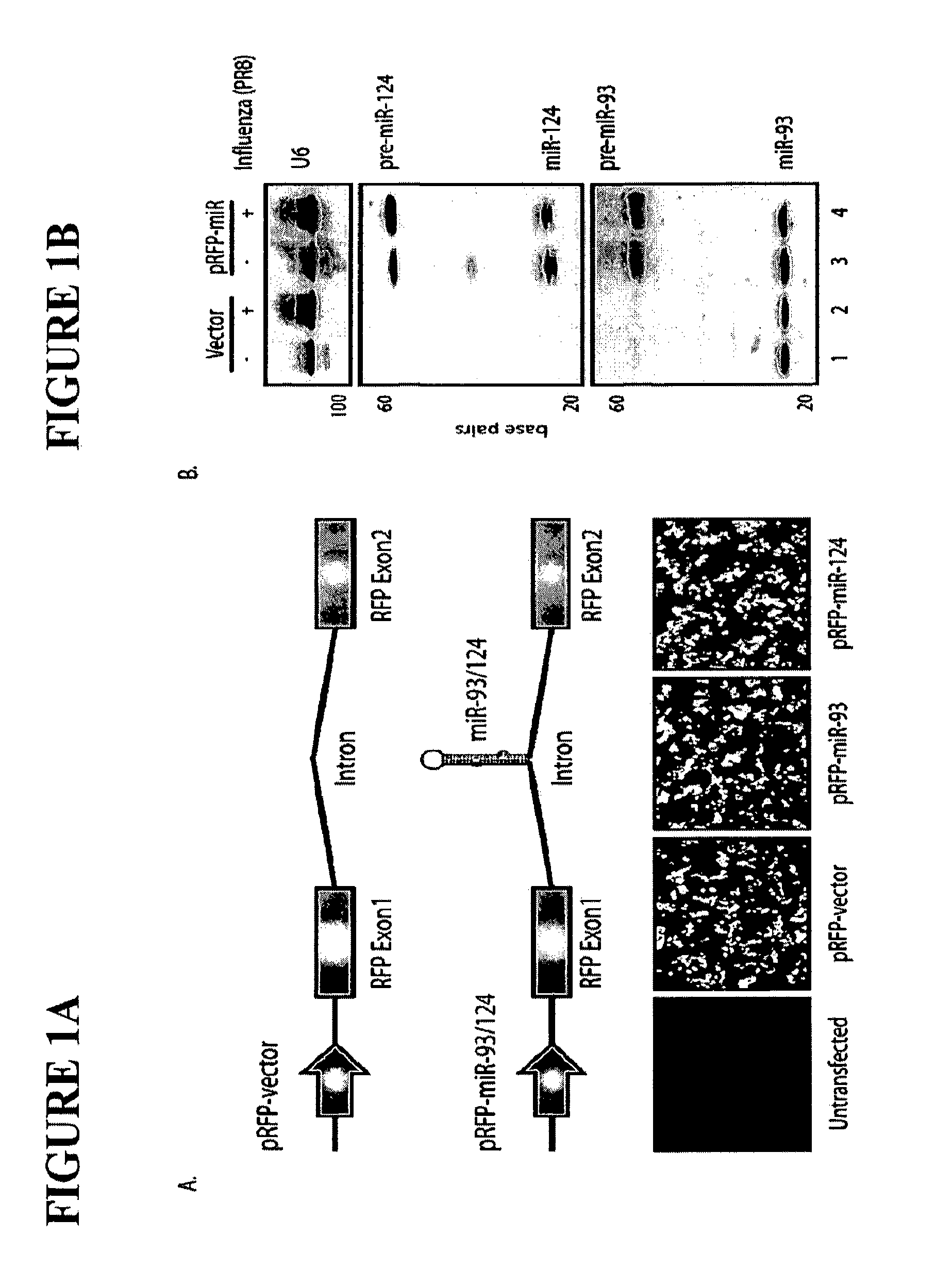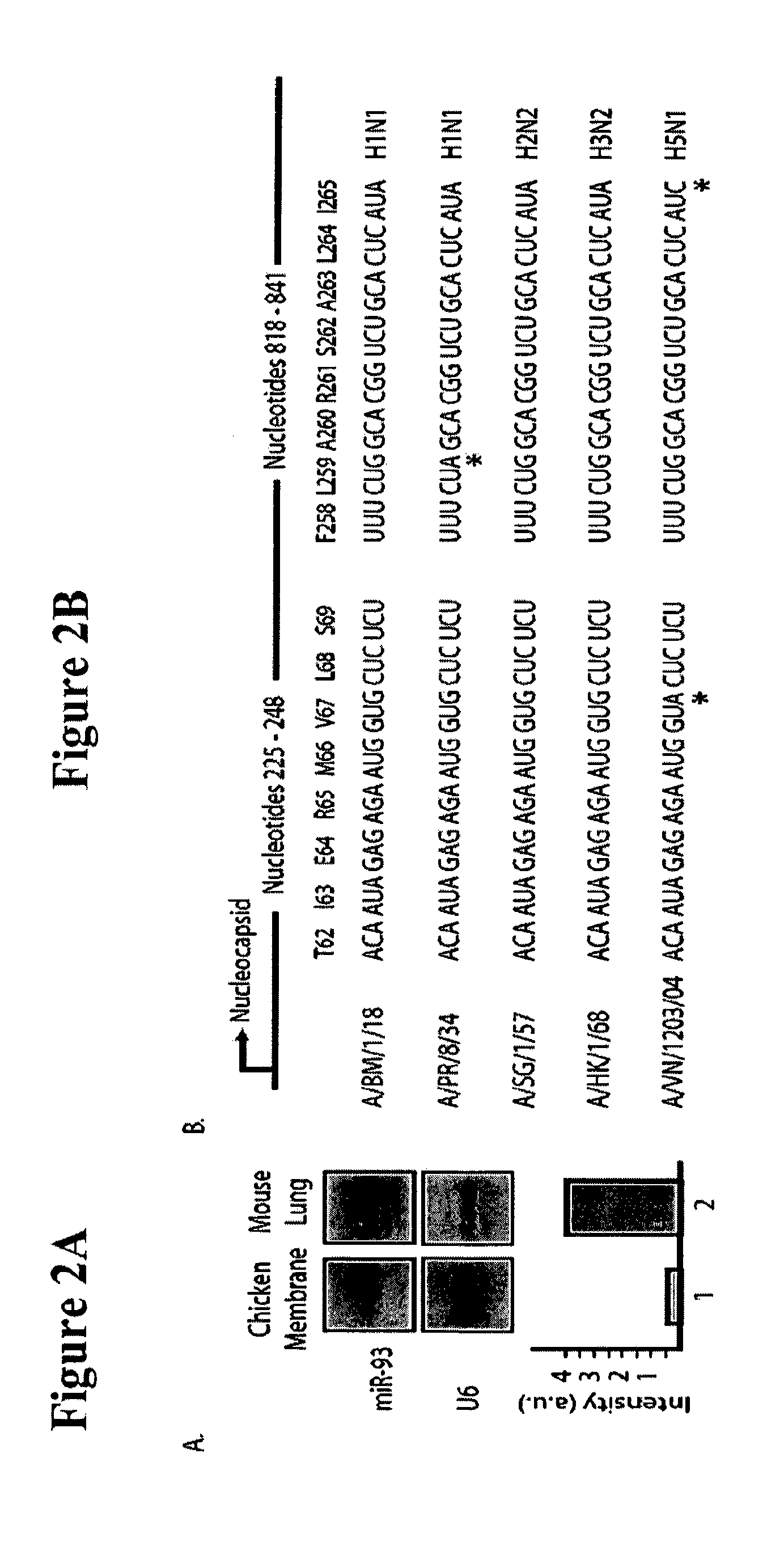Live attenuated influenza virus vaccines comprising microRNA response elements
a technology of attenuated influenza virus and live attenuated vaccine, which is applied in the direction of antibody medical ingredients, drug compositions, immunological disorders, etc., can solve the problems of human morbidity and mortality, direct economic costs of more than $1 billion, and catastrophic loss of life in the country, so as to increase the safety of vaccines
- Summary
- Abstract
- Description
- Claims
- Application Information
AI Technical Summary
Benefits of technology
Problems solved by technology
Method used
Image
Examples
example 1
Virus Infections
[0123]Animal infections were performed in accordance with NIH standards. 5 week-old Balb / c mice were purchased from Taconic Farms, Inc. (Albany, N.Y.). Mice were put under general anesthetic for approximately 5 min via inhalation of isoflorane, and a 50 μL volume of virus (resuspended in PBS) was placed on the snares of the mice as they regained consciousness. Viruses were titered by standard plaque assay and pathogenic studies were performed on cohorts of 3-5 mice / inoculating dose. Mice were weighed daily and sacrificed if they lost 20% of the original body mass. Vaccination studies using 1×103 plaque forming units (pfu) of MRE-containing H5N1 virus or mock PBS infections were performed intranasally (PBS, n=2; MRE-containing H5N1, n=7). 21 days post infection, mice were re-challenged intranasally with 1×106 PRNTL H5N1 and were monitored daily for signs of morbidity and mortality.
example 2
Passaging and Sequencing of Viral NP
[0124]Human lung epithelial cells were infected with PRNTL or MRE-containing H5N1 at an MOI of 0.01 in the presence of TPCK trypsin. 24 hrs post-infection, supernatant was transferred to naive cells and repeated the following day for a total of 10 passages. 10 dpi, RT-PCR was performed on total RNA and NP PCR products were cloned for sequencing purposes. For in vivo studies, 5 week old Balb / c mice were treated with virus as above. 5 dpi, total RNA was harvested, and used to clone NP for sequencing. Depicted sequences represent over 25 individual colonies per cohort.
example 3
miRNA Expression and Targeted Luciferase Vectors
[0125]The red fluorescent protein minigene expressing miR-124 was generated by E. Makeyev. Makeyev et al., Molecular Cell 27(3):435 (2007). For generation of pRFP-miR-93, a 500 bp genomic fragment containing the pri-miR-93 locus was isolated from mouse genomic DNA by PCR amplification with High Fidelity PCR Master Kit (Roche Applied Science, Indianapolis, Ind.) per the provided protocol, using forward 5′-TAGTGGTCCTCTCTGTGCTACCG-3′ (SEQ ID NO: 112) and reverse 5′-ATTGAACAAAAATGGGGACTCCT-3′ (SEQ ID NO: 113) primers. The resulting PCR product was subcloned into pCR® 2.1-TOPO (Invitrogen Corporation, Carlsbad, Calif.) according to the manufacturer's suggestions, and subsequently cloned into the pRFP minigene via PmeI-SpeI sites. Firefly luciferase constructs containing miR-124 MREs and control SV40 3′ UTRs were obtained from E. Makeyev. Makeyev et al., Molecular Cell 27(3):435 (2007).
PUM
| Property | Measurement | Unit |
|---|---|---|
| temperature | aaaaa | aaaaa |
| time period | aaaaa | aaaaa |
| volume | aaaaa | aaaaa |
Abstract
Description
Claims
Application Information
 Login to View More
Login to View More - R&D Engineer
- R&D Manager
- IP Professional
- Industry Leading Data Capabilities
- Powerful AI technology
- Patent DNA Extraction
Browse by: Latest US Patents, China's latest patents, Technical Efficacy Thesaurus, Application Domain, Technology Topic, Popular Technical Reports.
© 2024 PatSnap. All rights reserved.Legal|Privacy policy|Modern Slavery Act Transparency Statement|Sitemap|About US| Contact US: help@patsnap.com










